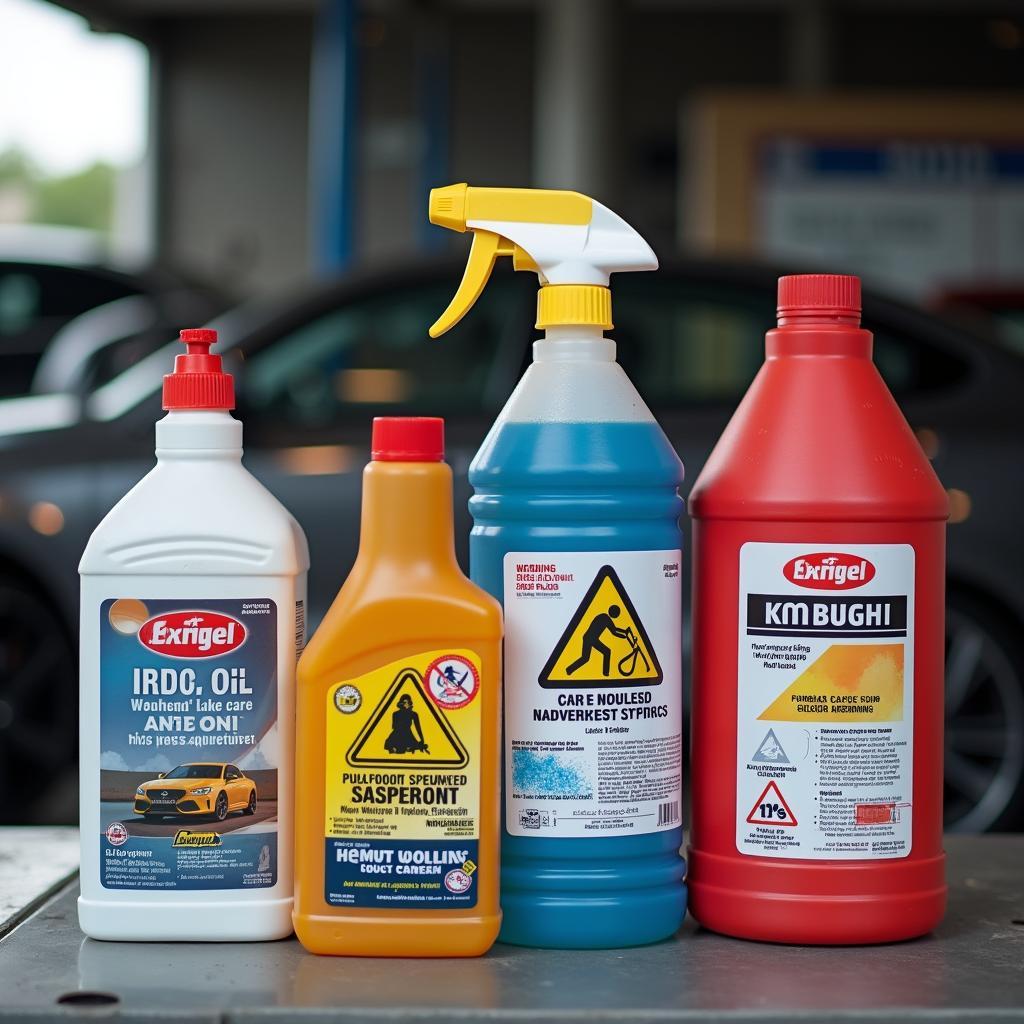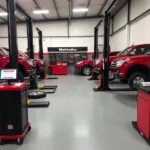Car service stations, while essential for maintaining our vehicles, can present a range of safety hazards for both employees and customers. Understanding these hazards is crucial for mitigating risks and ensuring a safe environment for everyone. This article delves into the common Hazards Identified In Any Car Service Station, providing valuable insights for both car owners and service professionals.
Common Hazards at Car Service Stations
Car service stations are dynamic environments with various potential dangers. These hazards can range from chemical exposures to physical risks. Let’s explore some of the most prevalent ones.
Chemical Hazards
Exposure to various chemicals, such as gasoline, oil, cleaning solvents, and battery acid, is a significant concern. These substances can cause skin irritation, respiratory problems, and even long-term health issues. Proper handling, storage, and disposal of these chemicals are paramount. Adequate ventilation is also crucial in minimizing exposure risks.
Physical Hazards
Slips, trips, and falls are common occurrences in car service stations due to spilled fluids, uneven surfaces, and cluttered work areas. Moving vehicles and heavy equipment pose further risks of collisions and crushing injuries. Proper signage, designated walkways, and safe lifting practices are essential for preventing such accidents.
Fire Hazards
Flammable materials like gasoline and solvents create a high risk of fire. Sparks from electrical equipment or improperly discarded cigarette butts can easily ignite these substances. Fire extinguishers should be readily available and regularly inspected. Designated smoking areas and strict adherence to fire safety protocols are essential.
After the initial assessment, the next step is to determine the root cause of the identified hazards. This involves a thorough investigation to understand the underlying factors contributing to the risks.
Ergonomic Hazards
Repetitive motions, awkward postures, and heavy lifting can lead to musculoskeletal disorders among service technicians. Providing ergonomic tools and equipment, along with promoting proper lifting techniques, can significantly reduce these risks. Regular breaks and stretching exercises are also beneficial in preventing long-term injuries.
Electrical Hazards
Working with electrical systems in vehicles presents the risk of electrocution. Damaged wiring, faulty equipment, and wet conditions can increase the risk. Proper insulation, lockout/tagout procedures, and the use of appropriate personal protective equipment (PPE) are vital for ensuring electrical safety.
Minimizing Risks at Car Service Stations
Creating a safe environment in car service stations requires a multi-faceted approach. Implementing comprehensive safety programs, providing regular training to employees, and conducting routine inspections are essential steps. Encouraging employee participation in safety initiatives and fostering a safety-conscious culture can significantly improve overall safety performance.
Regular Inspections and Maintenance
Regular inspections of equipment, tools, and the overall facility are crucial for identifying and addressing potential hazards before they lead to accidents. Maintaining a clean and organized work environment also plays a vital role in minimizing risks. Visit an automatic car service station for a glimpse of how a well-maintained facility can contribute to safety.
Conclusion
Hazards identified in any car service station require proactive measures to ensure the safety of both employees and customers. By understanding the various risks and implementing effective safety protocols, we can create a safer and more productive environment for everyone involved. Prioritizing safety not only protects individuals but also enhances the reputation and efficiency of the car service industry.
FAQs
- What are the most common chemical hazards in a car service station?
Exposure to gasoline, oil, cleaning solvents, and battery acid are common chemical hazards. - How can fire hazards be minimized in a car service station?
Proper storage of flammable materials, readily available fire extinguishers, and designated smoking areas are essential. - What are some ergonomic hazards for car service technicians?
Repetitive motions, awkward postures, and heavy lifting can lead to musculoskeletal disorders. - How can electrical hazards be prevented in a car service station?
Proper insulation, lockout/tagout procedures, and using appropriate PPE are crucial. - What is the importance of regular inspections in a car service station?
Regular inspections help identify and address potential hazards before they cause accidents. - What role does employee training play in car service station safety?
Training equips employees with the knowledge and skills to handle hazardous situations safely. - How can a safety-conscious culture be promoted in a car service station?
Encouraging employee participation in safety initiatives and recognizing safe work practices fosters a safety-conscious culture.
John Doe, Certified Automotive Technician, emphasizes, “Safety should never be compromised in a car service station. Regular training and adherence to safety protocols are paramount for protecting both employees and customers.”
Jane Smith, Occupational Safety Specialist, adds, “Ergonomic considerations are often overlooked but are crucial for the long-term health and well-being of service technicians. Providing ergonomic tools and promoting proper lifting techniques can prevent musculoskeletal injuries.”
Need help? Contact us via WhatsApp: +1(641)206-8880 or Email: [email protected]. Our customer service team is available 24/7.


